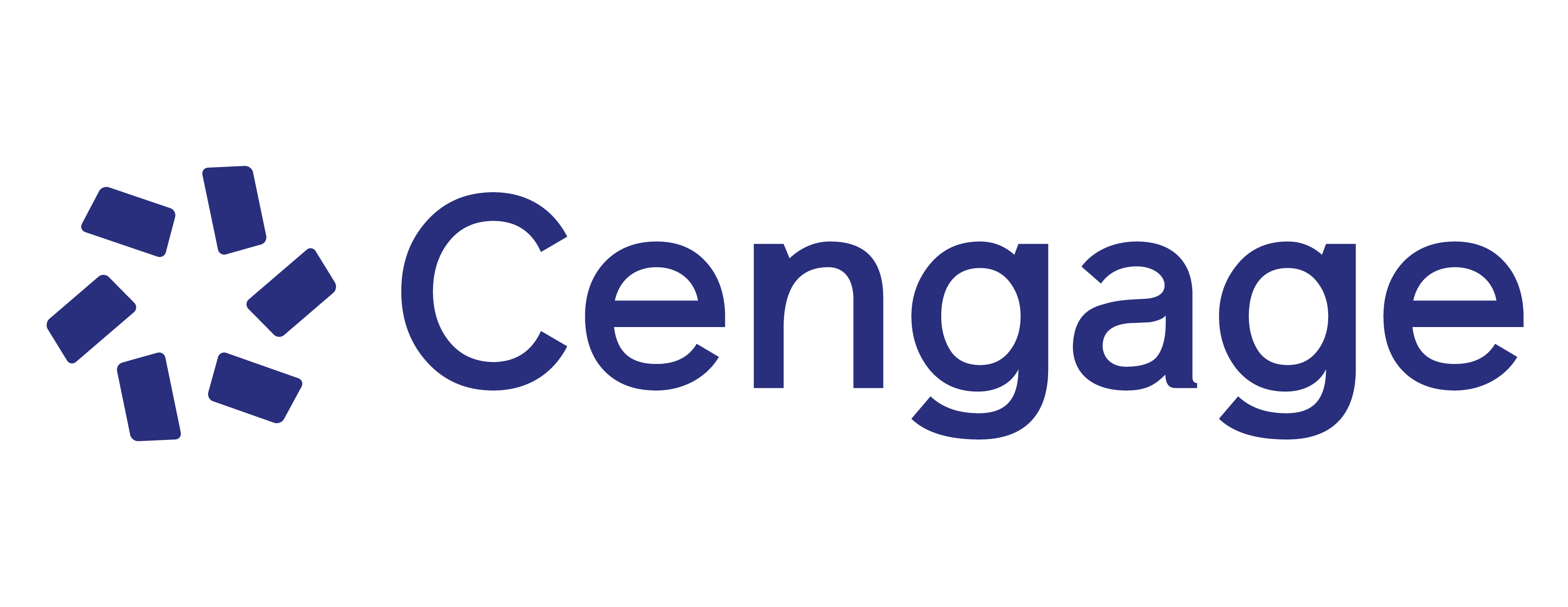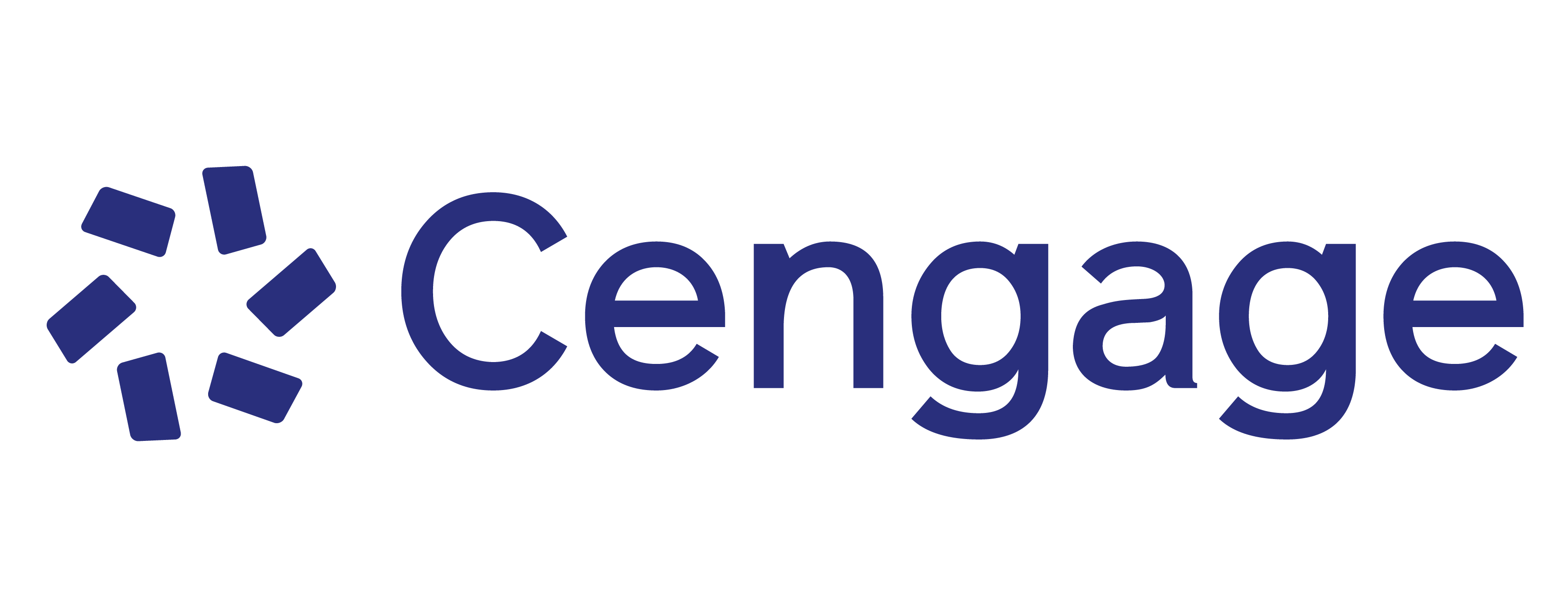Stay focused and practice the math skills you’ll need for success in other college courses and in your daily life with COLLEGE ALGEBRA, Twelfth Edition. This textbook has helped hundreds of thousands of students excel in the algebra course with its learning features and patient explanations. More than 400 worked examples include authors’ notes, which explain the steps involved in the problem-solving process--and guide you to understanding and proficiency.
0. A REVIEW OF BASIC ALGEBRA.
Sets of Real Numbers. Integer Exponents and Scientific Notation. Rational Exponents and Radicals. Polynomials. Factoring Polynomials. Rational Expressions.
1. EQUATIONS AND INEQUALITIES.
Linear Equations and Rational Equations. Applications of Linear Equations. Complex Numbers. Quadratic Equations. Applications of Quadratic Equations. Other Types of Equations. Inequalities. Absolute Value. 2. FUNCTIONS AND GRAPHS.
Functions and Functional Notation. Rectangular Coordinate System and Graphing Lines. Linear Functions and Slope. Writing and Graphing Equations of Lines. Graphs of Equations and Circles. Proportion and Variation. 3. FUNCTIONS.
Graphs of Functions. Transformations of the Graphs of Functions. Piecewise-Defined Functions and Greatest-Integer Functions. Operations on Functions. Inverse functions.
4. POLYNOMIAL AND RATIONAL FUNCTIONS.
Quadratic Functions. Polynomial Functions. Synthetic Division; Remainder and Factor Theorems. Decartes’ Rule of Signs and the Intermediate Value Theorem. Zeros of Polynomial Functions. Rational Functions. 5. EXPONENTIAL AND LOGARITHMIC FUNCTIONS.
Exponential Functions and Their Graphs. Applications of Exponential Functions. Logarithmic Functions and Their Graphs. Applications of Logarithmic Functions. Properties of Logarithms. Exponential and Logarithmic Equations.
6. LINEAR SYSTEMS.
Systems of Linear Equations. Gaussian Elimination and Matrix Methods. Matrix Algebra. Matrix Inversion. Determinants. Partial Fractions. Graphs of Inequalities. Linear Programming. 7. CONIC SECTIONS AND QUADRATIC SYSTEMS.
The Circle and the Parabola. The Ellipse. The Hyperbola. Solving Nonlinear Systems of Equations. 8. SEQUENCES, SERIES, AND PROBABILITY.
The Binomial Theorem. Sequences, Series, and Summation Notation. Arithmetic Sequences. Geometric Sequences. Mathematical Induction. Permutations and Combinations. Probability.
APPENDIX I A PROOF OF THE BINOMIAL THEOREM.
-
R. David Gustafson
R. David Gustafson is professor emeritus of mathematics at Rock Valley College in Illinois and has also taught extensively at Rockford College and Beloit College. He is coauthor of several best-selling mathematics textbooks, including Gustafson/Hughes' COLLEGE ALGEBRA, Gustafson/Karr/Massey's BEGINNING ALGEBRA; INTERMEDIATE ALGEBRA; BEGINNING AND INTERMEDIATE ALGEBRA; BEGINNING AND INTERMEDIATE ALGEBRA: A COMBINED APPROACH; and the Tussy/Gustafson and Tussy/Gustafson/Koenig Developmental Mathematics series. His numerous professional honors include Rock Valley Teacher of the Year and Rockford's Outstanding Educator of the Year. He has been very active in the American Mathematical Association of Two-Year Colleges (AMATYC) as a Midwest vice president. He has also served as president of IMACC, AMATYC's Illinois affiliate. Professor Gustafson earned a master of arts from Rockford College in Illinois as well as a master of science from Northern Illinois University.
-
Jeff Hughes
Jeffrey Hughes is Curriculum Coordinator of Mathematics at Hinds Community College and holds degrees from Mississippi College and the University of Mississippi. He has been teaching for more than 30 years at Hinds Community College (CC). Professor Hughes' favorite courses to teach include college algebra, calculus II and differential equations. He has a passion for mathematics, a heart for teaching and sees teaching as a privilege. He consistently finds new ways to present topics while engaging students and elevating student thinking. Professor Hughes is coauthor of COLLEGE ALGEBRA and PRECALCULUS, published by Cengage. He has received Hinds CC’s Outstanding Academic Instructor of the Year Award and Hinds CC’s Phi Theta Kappa’s Teacher of the Year Award twice. He was honored by the Mississippi Legislature for his commitment to education and was given the HEADWAE award. Professor Hughes is also active in the American Mathematical Association of Two-Year Colleges (AMATYC) and its Louisiana-Mississippi affiliate, LaMsMATYC, in which he has served as president. He is also active in the Mississippi Collegiate Mathematics Association (MCMA) and has served as president of this organization twice. At Hinds CC, he also teaches leadership in the Honors Institute. Professor Hughes has worked part-time for more than 25 years as a student minister at his church and has spent seven summers teaching English in China.
-
NOTE: This title is also available in WebAssign with Corequisite Support that provides the flexibility to match any corequisite implementation model and empowers you to deliver high quality content at the right time for your students at an affordable price.
-
ADDITIONAL INSIGHTS INTO SPECIFIC CONTENT. Take Note boxes highlight important information in the book. The noteworthy statements often provide clarification on a specific step or concept in an example and emphasize theory which can be overlooked.
-
CRITICAL THINKING EXERCISES. These exercises encourage algebraic thinking and assess conceptual understanding. These exercises are primarily true or false. If a statement is false, students are then asked to make the necessary change to produce a true statement.
-
HELPFUL STRATEGIES FOR STUDYING AND LEARNING CONTENT. Tip boxes appear throughout the textbook, with many providing a visual representative of the tip to help students remember it.
-
CRITICAL THINKING EXERCISES. These exercises help you think algebraically and assess your understanding of the concepts. These exercises are primarily true or false. If a statement is false, you are then asked to make the necessary change to produce a true statement.
-
WEBASSIGN: COLLEGE ALGEBRA, Twelfth Edition, is the powerful online homework and course management system that engages students in learning the math. WebAssign includes new end-of-chapter exercises, animated simulations, and pre-built assignments vetted by trusted subject matter experts along with robust course, section, assignment, and question settings and online testing to help instructors foster a deeper understanding of course concepts.
-
NUMBERED OBJECTIVES: Numbered learning objectives, which are listed at the beginning of each section and appear as subheadings in the section, keep students focused.
-
SELF CHECKS: Each example is followed immediately by a Self-Check exercise that actively reinforces student understanding of concepts and example solutions. The answers for students are offered at the end of each section. To assist instructors, the answers appear next to the problem in the Annotated Instructor's Edition, printed in blue.
-
GETTING READY EXERCISES: Each problem set begins with Getting Ready exercises, which test students' understanding of concepts and proper use of mathematical vocabulary. Students should be able to answer these fill-in-the blank questions before moving on to the Practice exercises.
-
COMPREHENSIVE EXERCISE SETS: The book contains more than 4,000 exercises, many new, to improve mathematical skills and cement understanding. The exercise sets--which include Getting Ready, Practice, Application, Discovery and Writing, and Review problems--progress from routine to more challenging. The mathematics in each exercise set is sound, but not so rigorous that it will confuse students.
-
CHAPTER REVIEWS AND CHAPTER TESTS: Each chapter closes with a Chapter Review and Chapter Test, giving students the best opportunity for study and exam preparation. Chapter Reviews are comprehensive and consist of three parts: definitions and concepts, examples, and review exercises. Chapter Tests cover all the important topics and yet are brief enough to emulate a "real-time" test, so students can practice not only the math but also their test-taking aptitude. As an additional quick reference, endpapers offer the important formulas and graphs developed in the book.
-
CUMULATIVE REVIEWS: To reinforce student learning and improve student retention of concepts, Cumulative Review Exercises appear after every two chapters. These comprehensive reviews revisit all the essential topics covered in prior chapters.
-
CAREERS IN MATHEMATICS CHAPTER OPENERS: To encourage students to explore careers that use mathematics and make a connection between math and real life, each chapter opens with Careers in Mathematics. New, exciting careers are showcased in this edition. Featuring information taken primarily from the Occupational Outlook Handbook, these snapshots include information on how professionals use math in their work and who employs them. A web address is provided, allowing students to learn more about the career.
-
CAREERS IN MATHEMATICS CHAPTER OPENERS: To encourage you to explore careers that use mathematics and make a connection between math and real life, each chapter opens with Careers in Mathematics. New, exciting careers are showcased in this edition. Featuring information taken primarily from the Occupational Outlook Handbook, these snapshots include information on how professionals use math in their work and who employs them. A web address is provided, so you can learn more about the career on your own.
-
APPLICATION EXAMPLES: Applications from a wide range of disciplines demonstrate how mathematics is used to solve real problems, answering the common question, "When will I ever use this math?" These applications, many accompanied by an eye-catching photo, help you become a better problem solver.
-
SELF CHECKS: Each example is followed immediately by a Self-Check exercise that actively reinforces your understanding of concepts and example solutions. The answers are offered at the end of each section.
-
COMMENTS: Comment boxes appear throughout the textbook, providing additional insights; for instance, clarification on a specific step or concept in an example, or a tip for studying the material.
-
GETTING READY EXERCISES: Each problem set begins with Getting Ready exercises, which test your understanding of concepts and proper use of mathematical vocabulary. You should be able to answer these fill-in-the blank questions before moving on to the Practice exercises.
-
CHAPTER REVIEWS AND CHAPTER TESTS: Each chapter closes with a Chapter Review and Chapter Test, giving you the best opportunity for study and exam preparation. Chapter Reviews are comprehensive and consist of three parts: definitions and concepts, examples, and review exercises. Chapter Tests cover all the important topics and yet are brief enough to emulate a "real-time" test, so you can practice not only the math but also your test-taking skills. As an additional quick reference, endpapers at the back of the book offer the important formulas and graphs developed in the text.
-
CUMULATIVE REVIEWS: To reinforce what you’ve learned and improve your retention of concepts, Cumulative Review Exercises appear after every two chapters. These comprehensive reviews revisit all the essential topics covered in prior chapters.
Cengage Testing, powered by Cognero® for Gustafson/Hughes' College Algebra, Instant Access
9781305882317
Cengage Testing, powered by Cognero® for Gustafson/Hughes’ College Algebra
9781305882324
Instructor's Web Site with Complete Solutions Manual for Gustafson/Hughes’ College Algebra, 12th
9781305878730
Instructor's Web Site with PowerPoint®, Image Library for Gustafson/Hughes’ College Algebra, 12th
9781305884786
Instructor's Web Site with Test Bank for Gustafson/Hughes’ College Algebra, 12th
9781305878754
VitalSource eBook: College Algebra 12 Months
9788000008660


